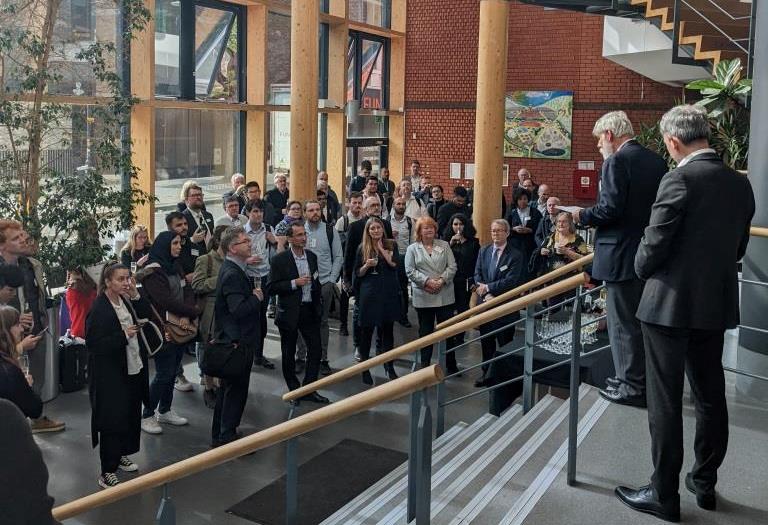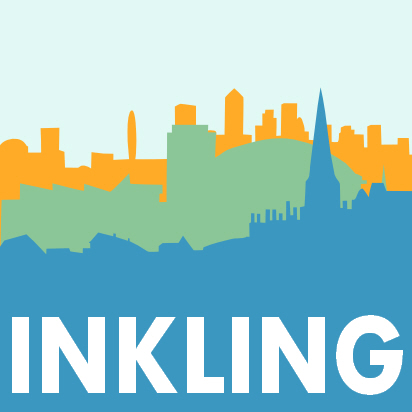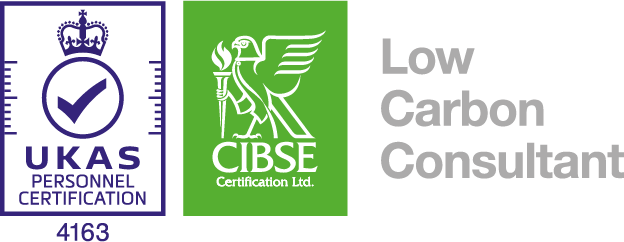CIBSE Technical Symposium 2022
Both Susie and Claire attended this years Technical Symposium at London South Bank University 21-22 April this year. We were slightly giddy at being out and about, catching up with people after so long, and mixing with so many humans in one place. As usual there was a great mix of academic researchers and industry practitioners sharing their work and ideas. Here is Susie’s write-up featuring the tweets sent during the event (embedded below) and her thoughts on the key talking points and themes.

There’s an increasing appreciation that we need to be better at estimating Embodied Carbon, and not just within building fabric but also the HVAC (and all the other “stuff” we put in buildings). Going forward this needs to be factored into energy options studies alongside the operational energy assessment. TM65 is helpful and manufacturers are more likely to provide environmental product declarations (EPDs) for their products if we keep nagging them.
Industry are advocating for a building regulations to start regulating embodied carbon, and have written a proposed Part Z as a proof of concept of the regulation that’s needed in the UK.
Will Belfield presented a case study exploring the whole life carbon of different MEP options, and it was striking (shocking) how much the refrigerant leakage within the VRF option increased the embodied carbon. Factoring this in changes the recommended (lowest carbon) solution.
Another consistent theme was that gas is on its way out. #EndGasNow All electric is the way forward for meeting net zero obligations and the questions now are about how best to configure heat pump systems, managing peak loads and deliver DHW demands. This last one in particular still seems to be up for grabs, with huge rewards available to the designer/manufacturer who can demonstrate an efficient, scalable, maintainable solution for all-electric domestic DHW.
NABERs UK and Design for Performance got regular mentions, and there was a keynote presentation from Grace Foo (all the way from Australia) on her valuable experience with NABERs, including engaging stakeholders, understanding margins and the importance of the IDR.
Definitions of what net zero means still vary with teams free to pick and choose what works for them, but hopefully industry (with LETI, UKGBC etc) are working towards helpful consensus.
On the horizon, SAP 11 (2025) is scoped to be a better predictor of in-use energy consumption than previous incarnations and a helpful design tool for delivering net zero new and retrofit homes.
Closing the event, Hywel Davies, gave a sobering preview of the Building Safety Bill which is likely to pass through government shortly and implements all the recommendations of the Hackett review. This will have significant implications around liability, demonstrating competence and in ensuring that the functional requirements within all building regulations are met. More advice is and will be available from CIBSE over the coming months.
All symposium papers are available to view here: https://cibse.egnyte.com/fl/LhegIWHlLw
On route to elephant and castle for the first *live* #CIBSEsymposium in a while. #GeeksAssemble #HereComeTheNerds
— Susie Diamond (@InklingLLP) April 21, 2022
Will Arnold from @IStructE opens symposium with keynote on embodied carbon and why we should care. Time is short and we still put too much 'stuff' into new buildings.#CIBSEsymposium pic.twitter.com/Gz0llof1eP
— Susie Diamond (@InklingLLP) April 21, 2022
Also makes reference to cibse TM65 (embodied carbon of building services) and all the free advice available from @LETI_London #EmbodiedCarbon #CIBSEsymposium
— Susie Diamond (@InklingLLP) April 21, 2022
Industry have collegiate to produce a proposed Part Z for building regulations to cover whole life carbon. Government are considering it … pic.twitter.com/sUeodjV685
— Susie Diamond (@InklingLLP) April 21, 2022
Will Belfield from @hoarelea with a case study exploring the whole life carbon of different MEP options.
— Susie Diamond (@InklingLLP) April 21, 2022
Illustrates how significant the impact of refrigerant leakage is.#CIBSEsymposium pic.twitter.com/NxaPBgRjT7
Refrigerant especially impactful for VRF systems (understandably).
— Susie Diamond (@InklingLLP) April 21, 2022
Some definitions of zero carbon, including existing ukgbc archive don't factor this in, which doesn't sound ideal..#CIBSEsymposium pic.twitter.com/rwHkQ2Wmlv
Tom Burton from @FairHeat talking about designing heat networks using heat pumps.
— Susie Diamond (@InklingLLP) April 21, 2022
Efficiency struggles when go to 100% heat pump as peak loads challenging, but great up to 95%.
Augment with electric boilers for peaks?#CIBSEsymposium pic.twitter.com/GG5M0zdGl8
Annie Marston from @hydrocknews discussing optimizing hotels and how Part L and EPCs dramatically over-predict dhw and space heating demands and carbon emissions.
— Susie Diamond (@InklingLLP) April 21, 2022
This means that upgrading to a net zero standard does not reflect in A rated EPCs – more likely C.#CIBSEsymposium
Important after lunch keynote from @JulieG_Sust and @thomas_etude on the future of SAP summarizing their brilliant report (a must read for anyone using sap regularly) with recommendations for SAP 12 (2025), available here: https://t.co/tHQZbetadX#CIBSEsymposium
— Susie Diamond (@InklingLLP) April 21, 2022
Their 25 key recommendations slide.
— Susie Diamond (@InklingLLP) April 21, 2022
Question from the audience about likelihood of getting able to assess energy performance and overheating risk using the same tool in future (Parts O and L) – fingers crossed!#Cibsesymposium pic.twitter.com/LstKzGYRad
Henrique Lagooeiro from @LSBU talking about performance metrics for heat pumps, and how variable grid carbon intensity can outweigh variations in COP for total carbon emissions per kWh (delivered heat) and cost (assuming variable tariff).#CIBSEsymposium pic.twitter.com/NPfF23qczw
— Susie Diamond (@InklingLLP) April 21, 2022
Interesting paper from John Field on a new free spreadsheet tool for tracking the implications of changes to buildings on operational energy use. Baseline can be validated against meters or modelling. Quick answers and "almost fun"!https://t.co/FEZrFKCZ9i#cbsesymposium
— Susie Diamond (@InklingLLP) April 21, 2022
Follow-on paper from Rod Bunn on an additional tool that can visualise the contributing factors 4 performance gap and track progress to limit it through the design process.
— Susie Diamond (@InklingLLP) April 21, 2022
Development ongoing but exciting potential and a useful addition to dynamic modelling?
@cibsesymposium
I got to experience an anechoic chamber. Like being alone in my own head. Odd.
— Susie Diamond (@InklingLLP) April 21, 2022
Thank you @LSBU #Cibsesymposium pic.twitter.com/sVEWUSEauz
Day 2
Heading in for day two… #CIBSEsymposium pic.twitter.com/Bg17EfQq77
— Susie Diamond (@InklingLLP) April 22, 2022
Inkling Claire @DasInkling is chairing the keynote session this morning, introducing Grace Foo from @DELTAQ#CIBSEsymposium pic.twitter.com/N3jZ91cLxK
— Susie Diamond (@InklingLLP) April 22, 2022
Grace Foo from DeltaQ talking about lessons learned from NABERs in Australia.
— Susie Diamond (@InklingLLP) April 22, 2022
Why do stakeholders care about Design for Performance? Need to understand these motivations and engage with them. pic.twitter.com/UsjgA0BEeL
Need to allow sufficient modelling margin, mindful that 25% is a smaller quantity as targets reduce. pic.twitter.com/JYPXNvFX5h
— Susie Diamond (@InklingLLP) April 22, 2022
IDR and simulation are important aspects. Early stage modelling is valuable design tool but takes skill and experience, modelling needs to be trusted. pic.twitter.com/W1uKtpZpQS
— Susie Diamond (@InklingLLP) April 22, 2022
Marshal Maskatenj talks about human response to visible daylight. Our melanopsin levels are suppressed when our retinal ganglion cells are triggered by daylight, making us more alert. #CIBSEsymposium
— Susie Diamond (@InklingLLP) April 22, 2022
@aarongillich reminding us that's it's now or never, and that over half of the emissions reductions needed to hit 2050 targets need to happen by 2030 – we have only SEVEN AND A HALF YEARS!#cibsesymposium pic.twitter.com/UdROwVMq4M
— Susie Diamond (@InklingLLP) April 22, 2022
What should universities be teaching NOW on building services degree courses to ensure graduates are focused on delivering net zero by default?#CIBSEsymposium
— Susie Diamond (@InklingLLP) April 22, 2022
Higher education and consequently cibse need to be ambitious in responding to CIC Climate Action Plan.
— Susie Diamond (@InklingLLP) April 22, 2022
Degree courses plus short courses can drive attitudinal change quickly.#Cibsesymposium
Hywel Davies from @CIBSE with the final presentation and a salient warning about major changes coming with the Building Safety bill. Greater liabilities (and PI premiums?) for product manufacturers and consultants, to show functional requirements of all regs met.#cibsesymposium
— Susie Diamond (@InklingLLP) April 22, 2022
Final words. #Done#CIBSEsymposium pic.twitter.com/t8sls3venQ
— Susie Diamond (@InklingLLP) April 22, 2022
 Posted by Susie Diamond
Posted by Susie Diamond- Posted in CIBSE, Claire Das Bhaumik, Research, Susie Diamond
 Apr, 25, 2022
Apr, 25, 2022 Comments Off on CIBSE Technical Symposium 2022
Comments Off on CIBSE Technical Symposium 2022

 Susie: 07972 263 676
Susie: 07972 263 676
 Join Us On In.com
Join Us On In.com

